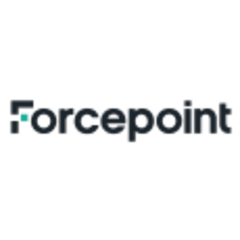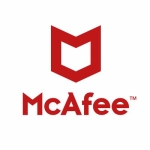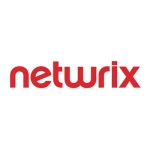What is our primary use case?
We do managed services. We analyze customers' requirements, and then we suggest a proper DLP or endpoint data protection solution. We have implemented Forcepoint DLP and Forcepoint Web Gateway for multiple customers.
How has it helped my organization?
Forcepoint DLP helped a lot when an incident was created and we tried to have an auto-remediation of the incident. For DLP, an incident is a key factor. DLP is meant to generate an incident, and that incident should be managed. If no one is managing the incident, DLP is of no use. Forcepoint has an email workflow. It provides email incident remediation wherein an automatic email is generated for the manager. If a person violates a policy, we can configure it in a way that one email is sent to the manager. One email will also go to the end-user. The end-user can again analyze the activity and give us feedback about whether it was a genuine business need and we should release that email, or whether it was a mistake and we should quarantine that email. The decision is made by the manager or by the end-user who sent the email. This helped a lot and reduced the incident count. It was very helpful to have such a report and to be able to say that the end-user was aware of the fact that this email has been quarantined. After providing the legal justification, the email was released by him. It reduced 40% of incidents for emails. This kind of feature is not available in other DLP solutions, and I really appreciate having that feature.
What is most valuable?
The workflow remediation is quite good. That is a key feature because of which it has the upper hand over other DLP solutions.
Endpoint protection, web protection, network protection, and storage use are valuable features. Among these, endpoint protection is most valuable.
It has good policies and good mechanisms to detect incidents.
What needs improvement?
They can have less memory consumption for their endpoint channels. They are not that adaptive with other endpoints solutions like EPP and EDR. They can improve in this aspect.
Their discovery or the way they discover the data at risk can also be improved. There are many database servers that are not supported by Forcepoint.
Their login mechanism to find out the issue is another thing they need to improve. We would like to have the finest login to figure out what exactly is happening and why we are not able to communicate with the detection server. One of the products I have used is better in this aspect. We can have the finest level login, and we can figure it out, but I haven't found such an option in Forcepoint.
For how long have I used the solution?
I have been into DLP technology for the last eight years. I have been using Forcepoint for three years.
What do I think about the stability of the solution?
I have worked with another DLP solution in and out, and I find that solution to be more stable than Forcepoint. Once you implement a policy in that solution, the policy will always function. You can be assured that the policy will be functional. With Forcepoint, I always need to check whether the policy is functional or not and whether my policy is getting synchronized on the detection server or not. There won't be any sort of end trigger if the policy synchronization was stopped.
What do I think about the scalability of the solution?
It is quite scalable. It is comparable to other DLP solutions in terms of scalability.
How are customer service and support?
I haven't interacted that much with their support, but whenever I created a case, there was proper support. As compared to other solutions, Forcepoint's support is more technical and professional.
Which solution did I use previously and why did I switch?
I have used other solutions. Many of the customers are switching to Forcepoint. They are not getting proper support from one of the vendors. So, they are switching to Forcepoint. They are getting equal or more benefits with Forcepoint, and its cost is also low.
Incident remediation is awesome in Forcepoint. One of the solutions that I used did not have incident remediation. Forcepoint again has the upper hand in terms of policies. It has nearly 1,700 policy templates that we can use. Many compliance-related and PII-related rules are readily available in those templates. Forcepoint also has a time-based policy, wherein they can detect that a policy is active within a certain period of time. This visibility is not there in other solutions. Forcepoint also supports flow data transfer analysis.
Overall, Forcepoint DLP has the upper hand. Stability and scalability are secondary. The primary thing is that an application should be usable. Forcepoint is really user-friendly, and it has multiple options. They say that they can detect the malware if data leakage is happening to malware. They do have some sort of analysis in their detection engine to detect malware.
How was the initial setup?
As compared to other DLP solutions, it is quite complex because they do have their policy server and analytics server in place, and their Forcepoint manager is also there. With other solutions, we need to have an Oracle Database in place, which is not required with Forcepoint. For Forcepoint, SQL Server can be quickly installed and is ready for use.
The installation duration depends on the organization and the size of the organization. For the same set of organizations, Forcepoint will take 30% less time as compared to others. In many organizations, I have implemented it within a month, and in many organizations, the project took one year.
The implementation strategy depends on the customer, but we do follow the implementation steps, such as gathering information and then deciding which detection server to go for, where to place it, and how many counts are required. If I have more than 30,000 agents, then I definitely need to think about one more endpoint prevent server. So, it depends on the organization size and the response of the organization in terms of how quickly they adapt DLP and how friendly they are with the DLP solution. The biggest implementation that we had done had 30,000 users.
What was our ROI?
Our customers have seen an ROI.
What's my experience with pricing, setup cost, and licensing?
Its pricing is quite low considering the features they are offering. As compared to other solutions, it is reasonable.
They do have professional support. If we need professional support, then there will be additional costs.
What other advice do I have?
You definitely need to do a proper calibration of the organization and data flow analysis. Even though there are 1,700 policy templates, each and every organization will have a different set of rules and data to be analyzed. So, data flow analysis is a must with Forcepoint DLP to create a proper policy.
Cost-wise, it is a very good product. An organization should really consider this product if they are in process of DLP implementation, or if they are thinking of switching from any other DLP solution. If there is a budget constraint or you need a good DLP solution, I would definitely recommend Forcepoint DLP.
I would rate Forcepoint Data Loss Prevention an eight out of 10. There is no DLP that will score a 10.
Which deployment model are you using for this solution?
On-premises
Disclosure: PeerSpot contacted the reviewer to collect the review and to validate authenticity. The reviewer was referred by the vendor, but the review is not subject to editing or approval by the vendor. The reviewer's company has a business relationship with this vendor other than being a customer: Partner






















